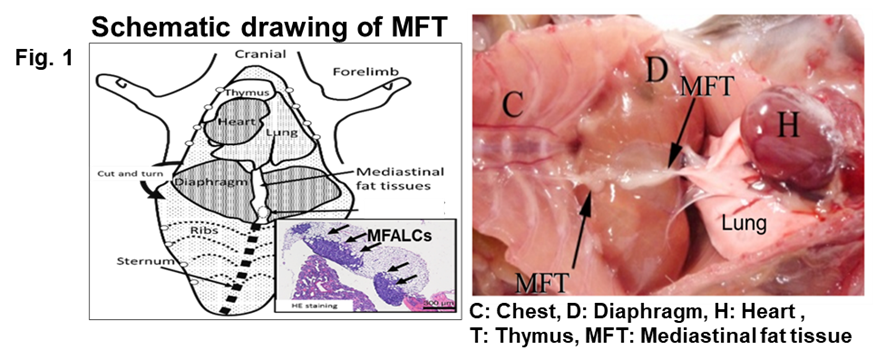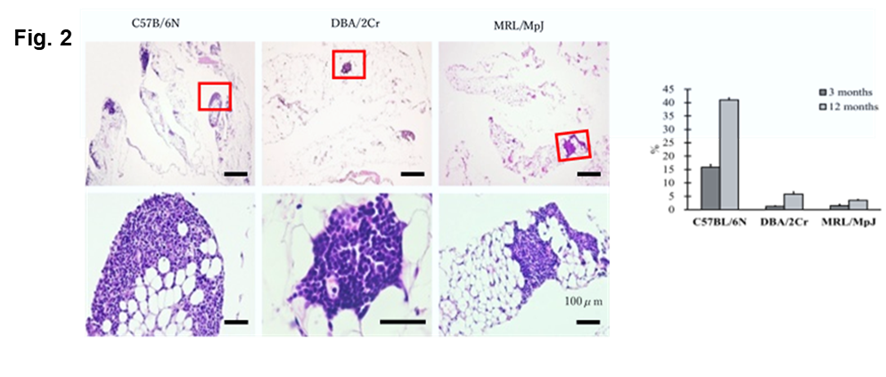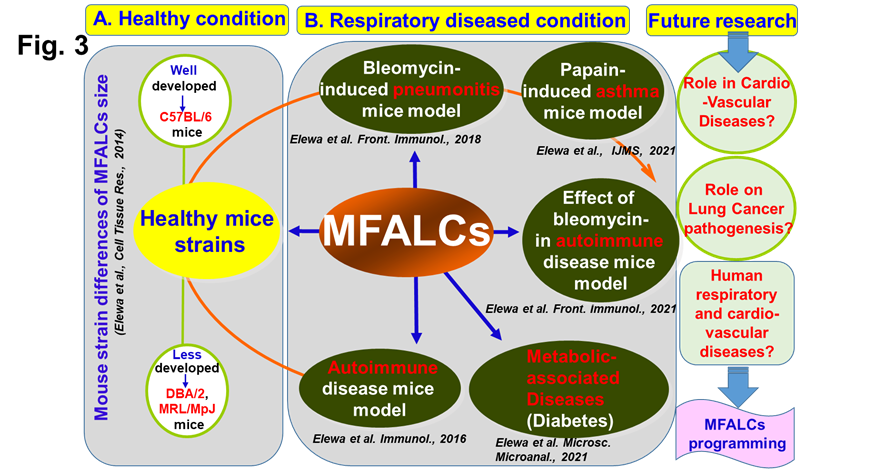What is mediastinal fat associated lymphoid clusters(MFALCs)refer to?
MFALCs are novel lymphoid clusters (LCs) that we discovered to be associated with the mouse mediastinal fat tissue(MFT)and has immune function (innate immunity) (Fig. 1).

Occurrence of MFALCs in healthy and diseased condition:

- Firstly, we reported their occurrence in healthy strains, and we revealed mouse strain difference in the size of MFALCs between C57BL/6N, DBA/2Cr, and MRL/MpJ mice. The C57BL/6N had significantly larger number and size of LCs than the other strains (Fig. 2) (Elewa et al., 2014).

- Secondary, we revealed the correlation between MFALCs development and the pathogenesis of lung injury using several mouse models (including autoimmune mouse models (Elewa et al., 2016; autoimmunity 2017); septic condition such as bleomycin induced-pneumonitis mouse model (Elewa et al., Front. Immunol. 2018; Elewa et al., Front. Immunol. 2021), and papain induced asthma like mouse model (Elewa et al., IJMS 2021); aseptic induction such as Mycoplasma pulmonis infection in mice (Boonyarattanasoonthorn et al., Infection, Genetics and Evolution 2019); and metabolic-associated disease such as diabetes (Elewa et al., Microsc.Microanal. 2021). However, the functional role of MFALCs in the pathogenesis of other respiratory diseases that requires innovative strategies (such as metastatic lung cancer); immune associated cardiovascular diseases such as atherosclerosis; and human respiratory and cardiovascular diseases remain unclear (Fig. 3).
Therefore, we consider that MFALCs programming could provide novel therapeutic strategies of some human and animal respiratory and cardiovascular diseases via targeting some genes or immune cells within such clusters (Fig. 3).
